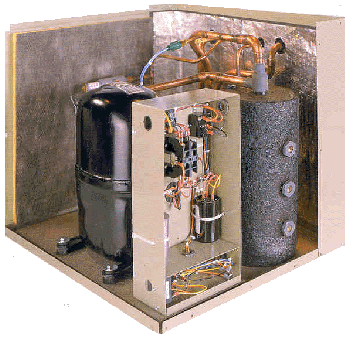DX Installations Gaining Momentum with Passage of New Standard
Direct-exchange geothermal heating and cooling systems have been around for more than a decade. However installations are likely to increase significantly now that the Air Conditioning and Refrigeration Institute (ARI) has approved a new standard for such systems. The recent approval of ARI 870: Direct Geo Exchange Heat Pumps means that direct-exchange systems will be independently tested and monitored to meet strict operating and safety requirements. This standard reaffirms what industry insiders have been saying all along about direct-exchange geothermal technology: It's the most environmentally sound, cost-efficient and comfortable heating/cooling system available.

 (Courtesy of ECR Technologies, Inc.)
(Courtesy of ECR Technologies, Inc.)Copper Tube is Key to Success of DX GCH Systems 
 Direct-exchange geothermal systems use the earth as an energy reservoir, taking advantage of the constant 55°F temperature about 4 feet below the surface. Copper tubes run underground carry a refrigerant that circulates into and out of a home. A compressor unit induces heat exchange, and heated or cooled air is distributed through an air handler.
Direct-exchange geothermal systems use the earth as an energy reservoir, taking advantage of the constant 55°F temperature about 4 feet below the surface. Copper tubes run underground carry a refrigerant that circulates into and out of a home. A compressor unit induces heat exchange, and heated or cooled air is distributed through an air handler.
By running tubes underground, the heat-transfer medium in geothermal systems always enters a home at 55°F, unlike other systems that are exposed to much hotter and colder outside air temperatures. Once inside the home, the compressor concentrates and delivers the heat. To increase efficiency further in the air-conditioning season, waste heat can be transferred to the water heater. Research indicates that geothermal systems reduce heating and cooling cost an average of 30 to 60 percent when compared to air-source heat pumps.
According to studies conducted by utility companies, the greatest savings are provided by direct-exchange geothermal heating and cooling systems, since they burn no fuel and consume no energy beyond the electricity required to operate the compressor and the fan used to circulate the air.
Benefits of DX Systems vs.Water-based Geothermal Systems 
What sets direct-exchange systems apart from other geothermal systems is the fact that only one transfer is required for heat exchange, compared to the two steps required in water-based systems. In direct-exchange systems, the refrigerant is distributed through copper tube, which is in direct contact with the earth heat source for effective thermal transfer. Water-based systems rely on two transfer stages, requiring about twice as much energy, as well as a circulating pump, which is not necessary for direct-exchange systems.
The copper tube used in direct-exchange systems is an excellent heat conductor—much more efficient than the plastic tubes used in water-based systems. This conductivity enables copper systems to work more efficiently with smaller-diameter tubes than those used in plastic systems, so bore holes are smaller, reducing excavation and installation costs.
 Courtesy of ECR Technologies, Inc.
Courtesy of ECR Technologies, Inc.